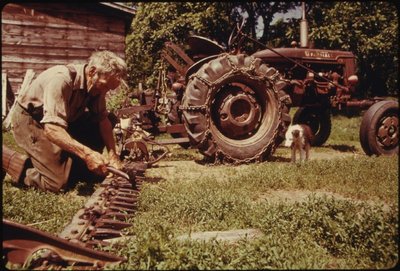Agriculture has come a long way in the past century. We produce more food than ever before but our current model is unsustainable, and as the world’s population rapidly approaches the 8 billion mark, modern food production methods will need a radical transformation if they want to keep up. But luckily, there’s a range of new technologies that might make it possible. While robotic process automation is often considered the end of work optimization, it’s much more complex than that. Automation will change the way we work, but it’s not as if we’re going to be turning our jobs entirely over to machines. To be truly effective, it still requires a certain degree of human management and oversight.
In his work ‘An Essay on the Principle of Population’ Thomas Malthus took a long view of human history, observing that human populations, when they have an abundance of food, grow until they strain their resources, at which point scarcity sets in.
New agricultural technologies such as steam-powered tractors and innovative techniques have staved off the famines that Malthus predicted. However, with the global population and consumption climbing to ever more staggering heights, the world needs another agricultural revolution to sustain itself. As mentioned in the introduction, one answer to this challenge may lie in automation. While agriculture has become increasingly automated over the last 200 years, the process is only accelerating. Innovations are allowing farmers to improve the efficiency of their crops and livestock production, as well as quickly neutralise threats such as disease or drought. 
Although Malthus' arguments were reasonable given the evidence at the time, one might ask the question if the Malthusian catastrophe was merely delayed by recent technological developments? That leaves us with two options: continue with our current system or create a new approach with younger farmers. Since the first option is evidently not able to keep up with the tremendous population growth of recent years, we need to redesign the way that agriculture is managed. It should be more sustainable and productive with the use of next generation technology. Using the Internet of Things (IoT) we can reimagine farms that are automated to reduce environmental impacts.
Albeit the ubiquitous fear that automation will render the human obsolete, human input and oversight is critical for innovation to be successful. The tasks, workflows and processes robots are employed to do must be developed and subsequently communicated, and that’s where humans come into play.
Building and implementing a complex automation process requires plenty of time and attention. In these regards, the most important step is determining what processes can and should be automated to achieve maximum efficiency, and this cannot be done without human intelligence. Once up and running, the robotic process automation will need to be overseen at various intervals, fixing anything that goes awry and identifying areas of potential improvement. Additionally, human input is required to go through, analyze and leverage all of the data and documentation reported by the robots. So, while the ultimate purpose of robotic process automation is to streamline operations, it’s not meant to replace human workers. In fact, at least as of the time of this writing, this wouldn’t even be possible. In reality, automation is meant to enhance and improve the work environment for humans and only with their support, input and management can the true benefits of automation be realized.